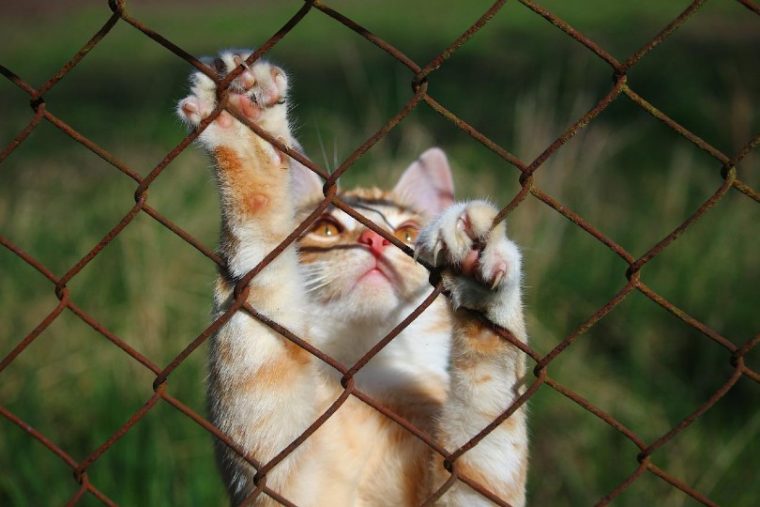
Feline wall climbing attempts are generally perfectly normal, and it’s usually a way for cats to engage with the world and get a bit of exercise. However, it can also signify stress, particularly if you’ve recently adopted a new pet or your cat is anxious because of environmental triggers such as loud noises.
If your cat is happy and healthy, and the wall climbing appears to be just good old fun and exuberance, everything is probably just fine. But consider contacting your veterinarian for guidance if this is a new behavior or if you suspect the wall climbing may be linked to new environmental stressors. Keep reading to learn why cats try to climb walls.
The 8 Reasons Why My Cat Is Trying to Climb Walls
1. Exercise
While cats often require less exercise than dogs, our feline companions need physical activity to eliminate pent-up energy. Indoor cats rely on their humans to meet their environmental needs, including their physical activity requirements. Cats sometimes get the zoomies, which are short periods of random, wild running about that usually occur at weird hours. Wall climbing sometimes stems from the same impulse, the simple need to get up and get moving for a few minutes.
2. Safety
Cats sometimes climb walls to reach high perches when they’re feeling unsafe. It’s what cats in the wild do when anxious or threatened, as it allows them to distance themselves from any potential threats. Cats often climb walls when trying to put space between themselves and rowdy dogs, cats, and kids. They also retreat to high places when anxious or stressed due to environmental issues such as repetitive loud noises and home renovations.
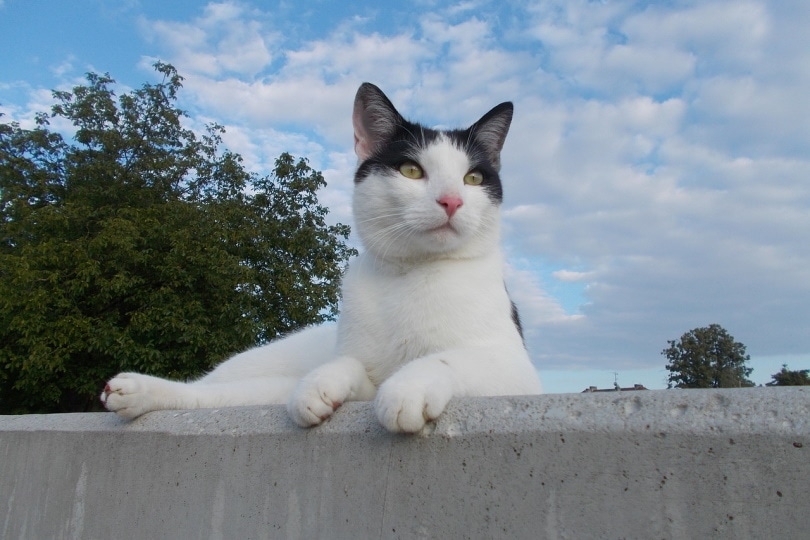
3. Exploration
Most cats are curious and happy to explore the world and all that it offers, preferably up close, where they can use their out-of-this-world noses to get more information. Pets looking for something entertaining to investigate sometimes climb walls to get a closer look at something or obtain a view of their world from a different perspective. If your cat is a persistent wall climber who enjoys investigating things and relaxing up high, it may be simply exploring.
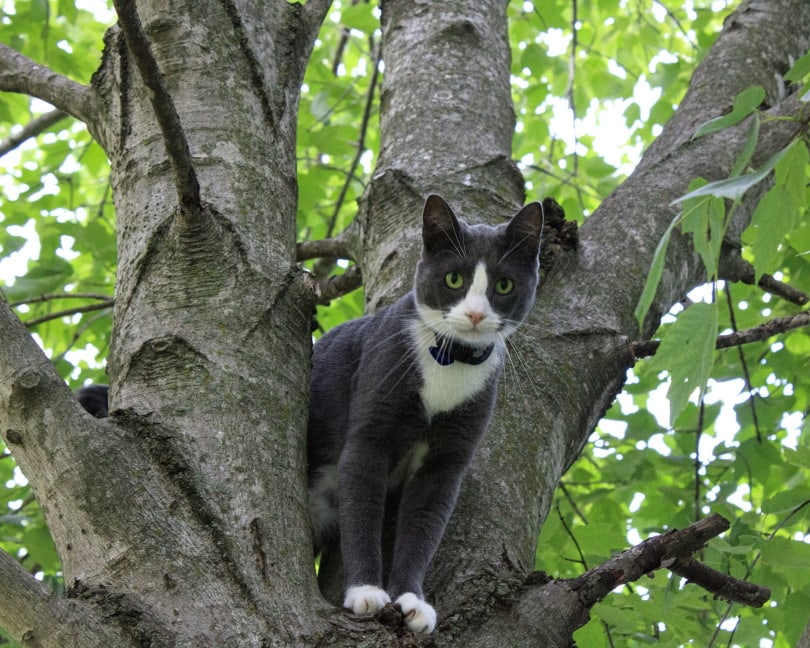
4. Stress
Wall climbing behavior can be related to stress linked to territorial incursions that may be causing your cat to feel anxious. While pets in some multi-cat households get along fine with each other, there are homes where things don’t work quite as smoothly, which can result in one cat preventing the other from eating and using the litter box in peace.
Cats that are feeling stressed due to competition from other pets sometimes withdraw and frequently make every possible effort to avoid conflict. Stressed cats attempting to scale walls are sometimes trying to reach spots marked with calming pheromones.
Pet parents with anxious companions are familiar with the discomfort their cats experience on a daily basis. The Hepper Nest Bed was thoughtfully crafted with the well-being of nervous pets at its core. Its unique bowl-like design features high rounded sides, offering security and a comforting haven for your cat, alleviating worry and stress. The self-warming, sherpa fleece liner and flexible molded foam embraces cats of all ages, sizes and ailments, making it the perfect choice for almost every day. To discover more about how the Nest can soothe your anxious pet, click here.
At Pet Keen, we’ve admired Hepper for many years and decided to take a controlling ownership interest so that we could benefit from the outstanding designs of this cool cat company!
5. Play
Cats need mental stimulation and exercise to be their best selves. Indoor cats often turn to play when their natural chasing, pouncing, and bounding instincts kick in. Pets having a bit of fun on their own sometimes try to climb walls when simply enjoying themselves. If your cat regularly attempts to climb walls without being triggered by something stressful or scary, they’re most likely just having a good time enjoying their physicality.
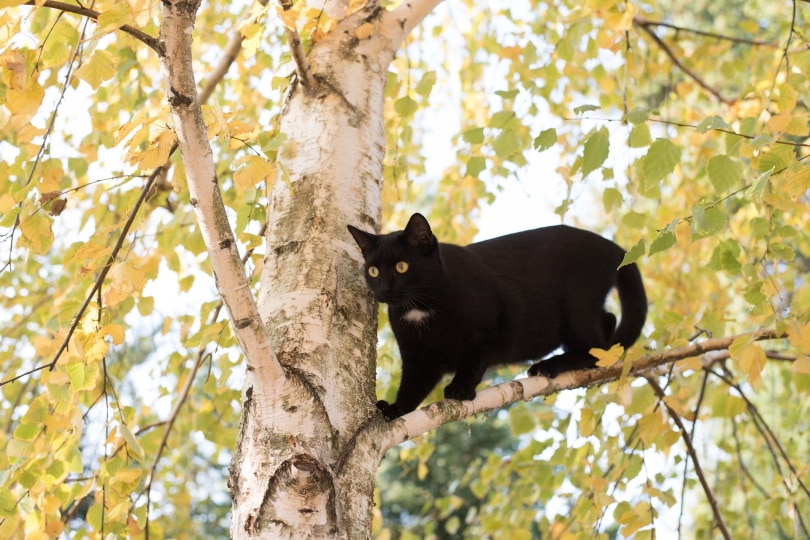
6. View
Cats love to watch what’s happening outside, and many can spend hours looking at the birds flying by and the squirrels jumping between tree branches. Your cat may be using the wall’s assistance to reach a favorite perch where they can enjoy the scenery. From your pet’s perspective, the entire situation is a fun way to get exercise and see what’s going on in the world.
7. Prey
Cats sometimes spring into action and try to climb walls when they’re particularly excited, often after seeing a flying creature. While some cats are disinterested in chasing and catching insects like flies, others simply can’t control themselves when presented with fluttering bugs. The action usually dies down as soon as the insect leaves, but you may want to open a window to provide an escape route for the bug if your cat is scratching up your walls.
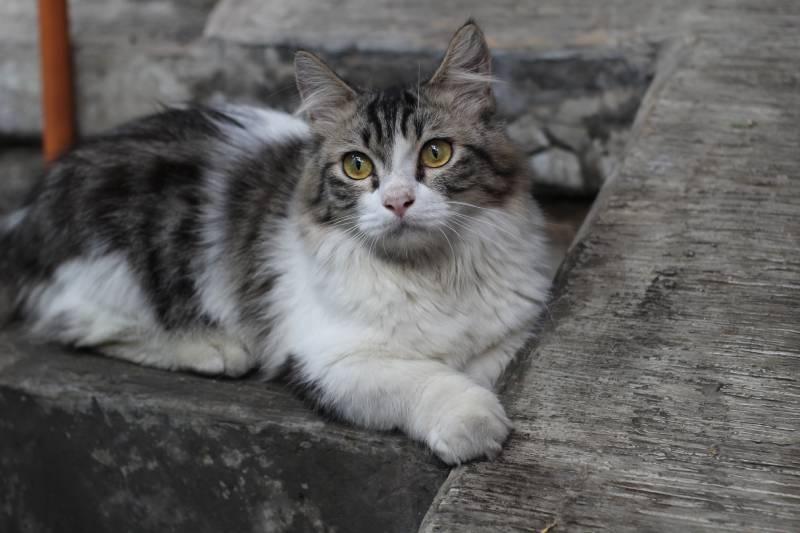
8. Boredom
Bored cats often attempt to find ways to entertain themselves, particularly when regularly left alone without toys to occupy their time. Not having enough to do often leads to stress and anxiety. Other signs indicating a cat is bored include a lack of appetite and decreased interest in activities they used to enjoy. Some cats meow and vocalize excessively, while others withdraw or sleep more than usual. Excessive grooming and aggression are also sometimes seen.
Regular play sessions can help your cat stay happy and healthy. Why not start the play with a fun toy like Hepper's Catnip Stick Toy? These sturdy toys are double-bagged, bite-proof, and filled with 100% organic catnip. Choose your favorite pastel color and treat your cat to hours of fun!
At Pet Keen, we've admired Hepper for many years, and decided to take a controlling ownership interest so that we could benefit from the outstanding designs of this cool cat company!
Are There Ways to Reduce Feline Wall Climbing Attempts?
Wall climbing in and of itself is not necessarily a problem, as long as your cat is doing so to entertain itself.
Adding Cat Trees or Shelves
Consider putting a few cat trees or shelves in the rooms where your buddy is most likely to get the urge to go climbing. Add catnip to make cat trees and shelves super attractive. You can also arrange your furniture to create a climbing gym that allows your cat to reach their favorite perch relatively easily.
Exercising More Often
Consider increasing your cat’s exercise and playtime. Cats that aren’t getting their mental and physical needs met often find ways to take care of things on their own, which results in inappropriate behavior.
Playtime is an excellent bonding activity and gives cats the mental and physical stimulation they need to be healthy and well-adjusted. About 20 to 45 minutes of playtime is all most cats require. Stick to short sessions (10 or 15 minutes maximum) to keep your buddy interested. Move on and try later if your cat doesn’t seem interested in engaging the minute you bring out the toys.
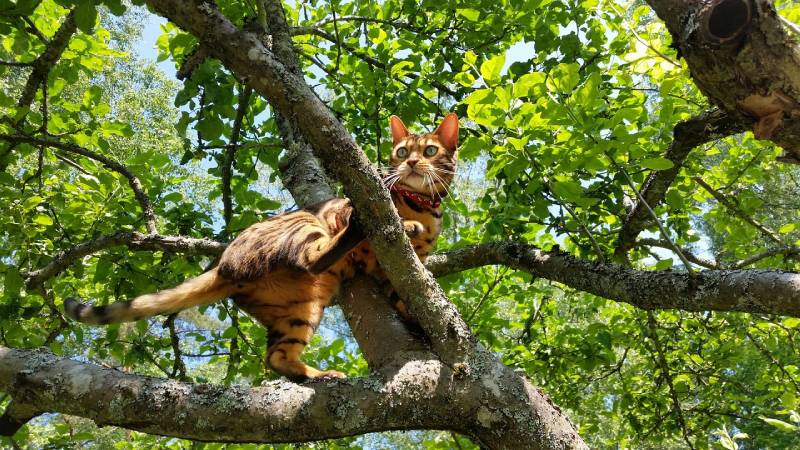
Setting Up a Safe Room
Cats suffering from environmental stress often benefit from having a room where they can retreat from it all. Make sure dogs and kids can’t get into the area. You can set up everything your pet might need in the room, including food, water, toys, high relaxation spots, and a litter box.
How Can I Tell Why My Cat Is Climbing the Walls?
Examining the context is often the best way to determine if your cat is having fun or is acting out of stress. Cats that are healthy, comfortable, and eating well are probably just having fun if they’ve always been active and enjoyed exploring and climbing. But sudden wall climbing activity should be taken seriously because behavioral changes can indicate stress and anxiety. Feline stress is often linked to environmental changes. Cats can be particularly sensitive to loud noises, new pets, and even space-invading visitors.
Conclusion
Cats try to climb walls for various reasons, from fear to curiosity. Most cats love investigating bugs and strange objects on the wall, and wall climbing is a favorite activity for many pets. Because cats naturally retreat to high locations when stressed, they sometimes try climbing walls when anxious or scared. Providing a cat tree and shelves gives energetic and athletic cats something fun to do and offers stressed-out kitties comfortable, safe places to relax.
Featured Photo Credit: rihaij, Pixabay








